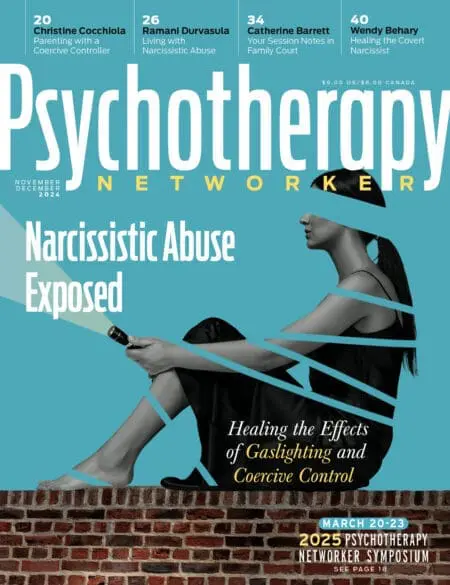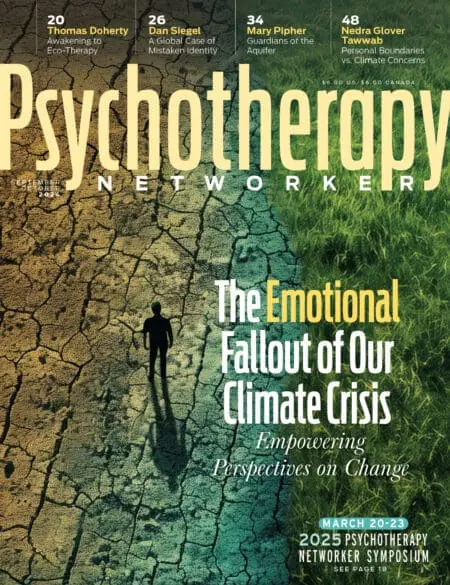“I’m a total failure at this ‘gentle parenting’ thing. My child rejects any and all calming tools. When I suggest she take deep belly breaths, she shouts back, ‘Stop telling me that!’ When I validate her feelings, she shouts, ‘I’m not angry!’ I do all the things. I show empathy when she’s having a hard time with tasks, like getting ready for school, but it doesn’t help her get it together and get dressed. I’ve read all about ‘sharing your calm,’ but no matter how calm I am, she rages. I fear that I’m totally screwing up my kid because I’m obviously failing at being the ‘gentle parent’ I need to be.”
This mother’s experience reflects what hundreds of other parents who’ve crossed my transom have shared in recent years. As hard as they’ve tried—and they’ve tried very hard—no matter how much empathy and validation they show, how calm they stay in the face of their child melting down, how many choices they offer so that their children feel respected and have agency, their children still have major meltdowns and draw them into persistent power struggles. These parents are exhausted and depleted. Some are depressed. I imagine many of you are seeing these parents in your practices.
In recent years, a major factor contributing to parental despair is the messages they’ve gotten, largely from social media (Instagram particularly), about “gentle parenting.” On the surface, these dictums seem reasonable: You should always be engaged in loving, joyful connection with your children. If you appropriately “coregulate” and “share your calm,” your child will calm when they’re upset. You should never feel frustrated, angry, or overwhelmed, or want a break from your child. Any separation, especially when a child is distressed, is tantamount to abandonment, or at best an insensitive rejection of their feelings.
You must always follow your child’s lead; if you don’t, you’re sending the message that you don’t care about or respect your child’s needs and interests. You should always be able to engage your child’s cooperation, through empathy and giving them autonomy (read: endless choices). Giving a direction or imposing a limit (even to ensure an important task, like toothbrushing or getting into a car seat, gets done) is dictatorial and authoritarian.
This advice has become synonymous with “gentle parenting,” but it’s not what I believe Sarah Ockwell-Smith, who coined the concept, necessarily intended. In fact, she defines gentle parenting as an approach based on boundaries, empathy, understanding, and respect—factors that contribute to a strong, secure attachment, which research has shown results in the healthiest outcomes for children’s social and emotional development.
The problem lies with the way gentle parenting has morphed into a prescriptive, one-size-fits-all approach. It may work with super adaptable, go-with-the-flow kids, born with an easy temperament, who weather changes and transitions with little distress and cope with limits and frustrations without much dysregulation. But for parents of fierce and feisty kids—big reactors, as I call them—it’s a whole other story.
These kids go from zero to 60 in a nanosecond, often in reaction to seemingly minor events, such as their parents’ cutting their sandwich the wrong way, taking a different route home from school, paying attention to the new baby, not letting them have more screen time, asking them to get out of the bath, not getting their blankets on exactly the way they want after 20 minutes of trying. When triggered into distress, these kids can have epic meltdowns, which may be destructive—hitting, kicking, spitting, hurling objects.
With big reactors, gentle parenting—as it’s characterized in social media—often does not work. These kids tend to reject calming tools. Or, as one six-year-old explained, “I remember the tools before; I remember them after; I just don’t remember them in the middle.” They don’t like parents validating and talking about their emotions: it feels intrusive and overwhelming, and it often leads to responses like “Stop talking to me! Stop telling me that! I’m not sad!”
When their brains are flooded with big emotions, the more their parents try to convince them to cooperate, the less likely they are to do so. They thrive on clear limits and boundaries. Time-ins, a primary gentle parenting strategy, in which parents stay with a child while they’re having a meltdown (versus time-outs, which entail a break between parent and child and are thus taboo) are challenging, especially when children have lost control of their bodies and are hitting, kicking, scratching, or biting.
This doesn’t mean that parents of big reactors can’t be gentle—nor that big reactors aren’t gentle, sweet, wonderful, passionate kids a lot of the time. They are. It means that we need to adapt the definition of gentle parenting to meet parents of big reactors in their realities, as it often requires a vastly different set of tools.
The following are lessons I’ve learned from being in the trenches with hundreds of families, helping them figure out what being a gentle parent to their amazing, fierce children really looks like: in other words, how to lovingly and sensitively help these kids learn to manage their big emotions and adapt to life’s expectations so they can thrive at home and in the world.
Coregulation may look very different with big reactors from how it does with a child who, by nature, is more easily regulated. Coregulation is the big buzzword lately in the world of parenting and child development, and it’s a key component of gentle parenting for a good reason: it’s important for kids to have parents who are able to stay calm in the midst of their collapse. It soothes the child’s (and parent’s) neurological system with huge benefits for everyone’s mental health.
The problem is that coregulation (and its companion trending phrase, sharing your calm) has come to mean that parents, when their child is in distress, must constantly be by their child’s side, repeating empathetic phrases and coaxing their child to talk about their feelings. If one Instagram-prescribed script isn’t working, then surely another will. If nothing works, the not-so-subtle implication is that the parent is clearly doing something wrong.
But these strategies often backfire with big reactors and are not coregulating at all. The more a parent tries to coax a big reactor to do deep belly breaths or accept a bear hug or talk about their feelings, the more dysregulated the child becomes. The more parents repeat supportive phrases (“I know, this is really tough. You’re so mad/sad right now. You’re having really big feelings. This is really tricky. I’m here for you. I understand”), the more reactive the child gets.
Parents mean to be empathetic, but for a child whose brain is flooded with emotions and in a completely irrational, overwhelmed state, this input is experienced as added stress, not support.
Gentle parenting doesn’t mean children are always happy or are going to make their parents feel like they’re being gentle. What a child wants isn’t always what they need. They’re going to want all their parents’ attention, but when the new baby arrives, they need to learn to share attention. They’re going to want all the sand in the sandbox, but they need to learn to share with others in order to build healthy relationships. They’re going to want endless books and cuddling at bedtime, but they need to get to sleep, and parents need and deserve time to themselves to refuel at the end of the day.
Providing what a child needs versus wants requires setting limits that kids don’t like. This is why you have to keep reminding yourself that limits are indeed loving, even when your child makes you feel like you’re being anything but gentle. My client Molly, for example, has had a ritual with her three-year-old, Leo, since he was two: they go to the library, right across the street from his school, every day after pickup at noon. It’s a lovely ritual, which has given them both a lot of pleasure.
This year, Leo stays at school until 3 p.m. and doesn’t nap. So now, when Molly takes him to the library after school, he’s exhausted and on overdrive. He runs around like a whirling dervish, screaming, knocking books off shelves, being rough with other kids. Molly can’t effectively get him under control, and a tense, physical power struggle ensues, with both Molly and Leo miserable.
Molly is in turmoil about this. She wants to be a gentle parent and encourage Leo’s exploration—to follow his lead and interests. She feels it’s mean to deprive him of an activity that he’s begging for and has been so fortifying. After all, it’s the library! But as we process this scenario, Molly recognizes that, after a long day at preschool, Leo needs less, not more, stimulation.
The decision she now makes is to go directly home after school for down-time and to make the library a weekend activity. We anticipate that Leo is likely to respond by having epic meltdowns, and we need to come up with a plan to help Molly avoid becoming reactive so she can be the rock Leo needs her to be to weather the depths of his disappointment.
When Leo does indeed go ballistic after Molly tells him that they’re not going to the library, she’s able to stay calm and quiet, even as Leo shouts that she’s a mean, unkind mommy. As she secures him in the car seat, she takes his shoes off so he can’t throw them at her (which he’s been known to do). She secures a fidget and a chewable toy to the car seat to provide him with safe, sensory tools to soothe himself. And she has moved his car seat to the middle, where he can’t kick her seat.
When they arrive at home, Leo is still dysregulated, so Molly brings him into his room—to create a safe boundary—and announces that his room is a magical library. She organizes a bunch of his stuffed animals in a circle and starts animatedly reading. After about 15 minutes, Leo calms and joins in.
This is what true gentle parenting often looks like: a parent tuning into a child’s needs, staying connected, and following their lead while establishing important boundaries to keep them safe.
Less is almost always more with big reactors. Over and over, in the videos parents send me showing challenging moments with their children and in the virtual home visits I do, I see that parents are doing way too much talking and problem-solving in the heat of the moment when kids are having a hard time. This comes from the most loving place: they don’t want to see their children in distress and will do whatever they can to relieve that discomfort. It also comes from having internalized the gentle parenting message that more is better: more empathizing, more validating, more efforts to calm their child. The implication is that if the child doesn’t calm, the parent must not be trying hard enough or be doing something wrong.
In reality, even when parents remain calm and loving in the face of a child spiraling out of control, there’s no guarantee that the child will calm immediately, and it’s not a failure if a child takes a long time to recover. One video a parent shared with me showed her four-year-old screaming, “I can’t calm down!” over and over while thrashing his body on the floor for almost 20 minutes. He was in a “red zone.” Often, after kids recover from these major meltdowns, they describe feeling like their “brain is on fire and a monster takes over,” as one articulate six-year-old explained. While in a “red zone,” these kids are not able to access the coping skills their parents have diligently tried to teach them.
This doesn’t mean parents’ hard work to stay calm and regulated is for naught. It’s exactly what their child needs—whether it takes five minutes or an hour (or more) to calm. Just staying calm and weathering a storm is what makes parents “gentle.” It’s not about an endless stream of emotionally validating scripts, as Instagram would have you believe. Sometimes, being a gentle parent means just sitting nearby, calmly, while a child is in meltdown mode. It may mean removing toys from a child’s grasp so they don’t get thrown. It may mean providing a pillow for a child to hit, rather than the walls. It may mean using zero language and just remaining a calm presence. There’s no one-size-fits-all approach to helping kids calm. It’s about helping parents tune in to what their child needs—what helps them feel safe.
This principle was beautifully illustrated by a story one client recently told me about her three-year-old’s epic meltdown at pickup from school when she brought a snack that wasn’t the one he wanted. He demanded she go back home, get the snack he wanted (expected), and then return to get him. She stayed calm and validated his disappointment, saying she knows how hard it can be when something doesn’t happen the way he wants it. She said he didn’t need to eat the snack she brought, and that when they got home, he could choose a different healthy snack. This was totally unacceptable to him, and the meltdown persisted. As calmly as she could, she got him into the stroller as he continued to cry and scream. When they got home, he was still dysregulated. She brought him into a quiet, safe, boundaried place in their home and told him she was there for him—one time. She didn’t keep talking or repeating empathetic phrases in an attempt to calm him. He threw himself on the floor and kicked the floor. She stayed quiet and calm. After about five minutes he climbed into her lap, cried on and off for a few more minutes, and then declared, “I’m done,” and started to play.
Parents can’t make their child calm down. They can only do their best to try and control their own reactions, so they can be the parent their intense child needs them to be.
Taking breaks can sometimes be the most loving, gentle response in challenging moments. Gentle-parenting dogma stipulates that parents must always stay physically present with their child whenever they’re in any distress. Any type of separation is seen as punitive and detrimental to children—abandoning them in their time of need. This makes sense in theory, but it’s a different ballgame for parents whose kids go to a category-five hurricane in a nanosecond, who hurl objects, kick, hit, bite, scratch, and spit when their “downstairs brain” takes over, and who don’t respond to calming strategies their parents desperately try.
In these often-scary moments, parents instinctively know that a break is necessary (for themselves and their children), that desperately trying to convince their child to stop being aggressive as they get increasingly dysregulated themselves (because they’re human) is unhealthy. But they’re hamstrung by guilt and worry that a separation in this situation is neglectful and rejecting of their child, so they stay in the struggle, to everyone’s detriment.
I learned long ago from doing home visits that when things are spiraling out of control—when parents are unable to help their child calm and/or they’re unable to stay calm themselves—a break, done calmly and supportively, is loving, not harmful. This type of break enables parents to coregulate and maintain a positive connection. “Sharing their calm” may not be giving a bear hug or guiding a child to take deep breaths (because the child is rejecting these calming tools), but sitting on the other side of a door and repeating a loving mantra to show their child they’re present and caring—something that’s impossible for many parents to do when face-to-face with a child who’s spitting, hurling objects, and hitting them.
The breaks I suggest parents implement in such challenging moments aren’t punitive. I don’t call them timeouts because this term has become synonymous with punishment. I call them safe-space breaks. Together with the child, the parent sets up the room so it’s full of items children can safely throw themselves into (i.e., bean bags), squeeze, hit, and throw. It may have a kiddie tent they can nestle themselves into. It’s implemented caringly, not callously. It’s not, “What’s wrong with you? Why are you hurting me? Go to your room right now!” It’s “This is a tough moment. You have really big feelings, and your body is acting before your brain. Let’s help you take a safe-space break.” This creates the space parents and children need to prevent further escalation and come back together to solve the problem when they’re both calm. Breaks aren’t necessarily harmful to young children. When they’re executed with warmth and empathy, they provide a powerful model of self-control for managing big emotions—and this is what makes parents “gentle.”
It’s also critical to give parents permission to take their own breaks. “I’m having big feelings too. I’m going to take a daddy break so I can get calm and be able to help you.” The break makes it possible for parents to avoid being reactive—yelling, threatening, getting punitive—responses that are harmful to children, and the parent–child relationship. As one mom put it, “I’m not a bottomless pit of empathy.” Getting the validation that they’re not always going to be able to calm their child or remain calm themselves enables parents to manage their expectations and give themselves some grace—which ultimately enables them to be the rock their big reactors need them to be.
Note that there’s no evidence that time-outs, when done calmly and lovingly, are harmful to kids. Science journalist Melinda Wenner Moyer recently reviewed the research on timeouts and found: “In the parenting advice world, the big concerns about time-outs are that they are emotionally damaging and that they erode the quality of the parent-child relationship. Yet I couldn’t find evidence to suggest they do either of these things, and found plenty of research suggesting the opposite.” She continues, “Clinical psychologists evaluated the vast published research on time-outs, concluding that ‘time-out represents a safe, effective form of discipline which, in the context of a larger environment dominated by positivity, consistency, and predictability, has been shown across hundreds of research studies to be beneficial to the overall emotional and developmental functioning of young children.”
Renowned psychologist Cara Goodwin—of Parenting Translator—did a deep-dive into the genesis of time-out and its impact on parent-child attachment (presumably because parents are bombarded with claims on social media about time-out eroding a secure attachment). She found that time-out has no negative impact on attachment, and that “temporary and predictable separations with positive reunions are an important part of secure attachment.” It’s all about how parents provide this break.
Implementing boundaries, versus giving endless choices, is not thwarting children’s autonomy or being “ungentle.” A mom of a five-year-old and a two-year-old wrote this to me: “Do these experts giving parenting guidance know that sometimes we actually have to be somewhere (school/work/doctor appointment) and don’t have the time to process with our kids why they’re having a hard time getting dressed, brushing their teeth, getting into the car seat, or to make up some kind of game to make it fun and hope it will lead to their cooperation?”
The assumption inherent in much of the advice from the gentle parenting community is that parents have all the time in the world to explore their children’s feelings when they’re having a hard time making a transition, and that doing so is the most loving and appropriate way to engage their child’s cooperation and maintain a positive connection. Parents are getting the message that setting a limit to help their children move on in these difficult moments is somehow harmful—dictatorial/authoritarian—and a rejection of their autonomy.
This is misleading and unhelpful gentle-parenting dogma, which leaves parents feeling that they don’t have what it takes to engage their children’s cooperation through connection and collaboration. In real life, trying to coax kids to cooperate and going deep into feelings—asking questions about why they’re having a hard time and offering myriad calming strategies or solutions when an important task needs to be done or a transition made—is not what’s actually helpful for many kids. It sounds good in theory, but in practice it overwhelms and dysregulates them further. What they need—what connection and respect looks like in these moments—is parents helping them move along and get unstuck.
It’s not loving for kids to be late to school, or to have the power to prevent their parents from getting to work on time. It’s not loving or gentle to stay stuck in a dysregulated place with a child that’s keeping them from engaging in an edifying activity. Kids need their parents to show empathy that they’re having a difficult time and then help them through it.
Consult after consult, parents tell me that when they stop trying to get their child to cooperate, and instead calmly and lovingly set a clear limit, their child calms and moves on in a much more positive way. What does this look like? Recently, I worked with the parents of five-year-old Anastasia. Every morning, for months, Anastasia had refused to get dressed, resulting in battles that ended with her parents having to wrangle her into clothes that she’d immediately tear off.
After our consult, her mom made this course correction: “I see you’re having a hard time choosing an outfit. Our timer says we have five minutes to get dressed. Then it’s time to leave. If you choose not to put school clothes on, I’ll put some in your backpack, and you can change anytime you like at school.” She communicates this calmly and lovingly. Her child continues to rage, but once she’s buckled in and on the way to school, she calms. The teacher reports she put her school clothes on immediately and had a great day.
We therapists know that there’s no one-size-fits-all approach to anything when it comes to the mental health of humans—children or adults. There are no prescriptions—“gentle parenting” or otherwise—for forging the strong, healthy attachments that are so critical for healthy development. What we do know is that parents who tune in to their children’s temperament and have the insight and tools they need to meet their child’s unique needs are much likelier to build healthy connections with their children. That’s the process and path they need our help navigating.
ILLUSTRATION © WETZKAZ/ALIAKSANDRA
Claire Lerner
Claire Lerner, LICSW, is a nationally recognized child-development and parenting expert with more than three decades of experience in education and direct practice. She partners with parents and other caregivers to decode their children’s behavior and solve their most vexing childrearing challenges. She’s also a mental health consultant to preschools in the Washington, DC region. Contact: clerner92762@gmail.com or lernerchilddevelopment.com.













